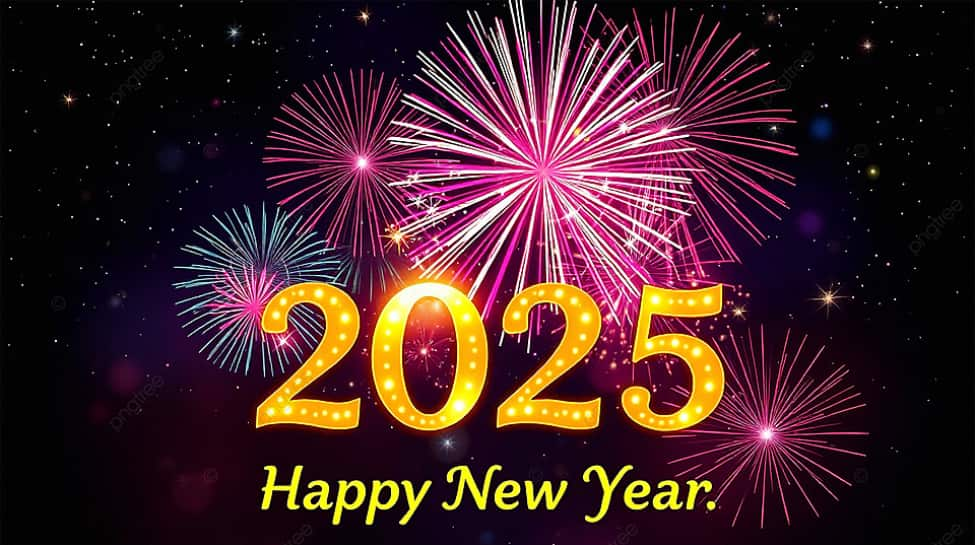 |
|
The article "Happy New Year 2025: Best Wishes And Messages For Colleagues And Coworkers To Share On New Year’s Eve" offers a comprehensive collection of fifty New Year's messages designed for professional settings. These messages are meticulously categorized to cater to various relationships and communication styles within a workplace. The diversity in message types underscores the importance of tailoring communication to specific contexts, ensuring the message resonates with the recipient. The article's primary focus is providing readily available, diverse, and appropriate messages to facilitate positive workplace interactions at the start of a new year. The structure allows readers to quickly find suitable messages based on their relationship with their colleagues, ranging from formal and professional to light-hearted and friendly.
The messages are broadly categorized into several distinct groups, each reflecting a unique tone and purpose. "Heartfelt Wishes" offers straightforward and sincere expressions of well-being and success. "Motivational Messages" inspires colleagues to set ambitious goals and achieve great things together. "Team-Oriented Messages" explicitly acknowledges and celebrates the collaborative spirit within the workplace, emphasizing the shared accomplishments and potential for future success. The "Light-Hearted Messages" offer a lighter, more informal approach, injecting humor and a sense of camaraderie into the New Year's greetings. This approach helps to foster a positive and relaxed atmosphere, particularly beneficial in high-pressure work environments.
Furthermore, the article includes "Appreciation Messages," allowing colleagues to explicitly express gratitude for the contributions of their coworkers. This recognition goes beyond simple pleasantries, highlighting the value of each individual's role within the team. The "Encouraging Messages" provide positive reinforcement and motivation, emphasizing collective capabilities and fostering a sense of shared purpose. "Friendship-Focused Messages" emphasize personal relationships alongside professional collaborations, acknowledging the significance of camaraderie and friendship in the workplace. The "Inspirational Messages" aim to uplift and motivate, reminding colleagues of the potential for growth and success in the new year.
The article also includes "Formal Wishes," suitable for more hierarchical or formal workplace settings, maintaining a level of professionalism while conveying well-wishes. "Fun and Festive Messages" provide a celebratory and upbeat tone, ideal for informal settings or teams with a strong sense of camaraderie. The inclusion of these diverse message types ensures that there's an appropriate message for every situation and relationship dynamic within a workplace. This broad spectrum demonstrates an understanding of the varied communication styles and relationships that exist in most professional settings. The inclusion of specific examples significantly increases the article's practical value.
Beyond the message collection, the article also offers practical advice on sharing these messages effectively. It suggests utilizing team email threads or workplace communication platforms like Slack or Teams for efficient dissemination. The advice emphasizes the importance of personalization, particularly for closer colleagues, demonstrating an understanding of the nuances of workplace communication. The suggestion to pair messages with a small token of appreciation, such as a digital card or festive image, adds a thoughtful touch, enhancing the impact of the message and strengthening workplace bonds. This practical advice transforms the article from a simple list of messages into a guide on how to cultivate positive workplace relationships.
In conclusion, the article effectively serves its purpose by providing a comprehensive resource of New Year's messages for colleagues and coworkers. Its strength lies in its categorization, allowing users to easily find appropriate messages for different situations. The inclusion of practical tips further enhances its usability, making it a valuable tool for anyone seeking to foster positive relationships and a productive work environment in the new year. The breadth of the message collection ensures that individuals can find suitable options regardless of their workplace culture or relationship dynamics with their colleagues. The article’s focus on fostering positive workplace relationships and improving communication at the beginning of the year reflects a strong understanding of the importance of workplace culture and morale.
